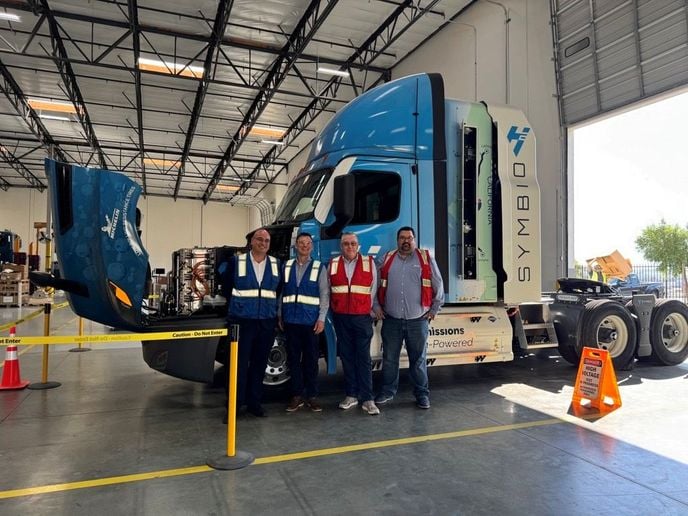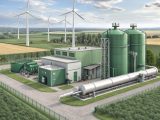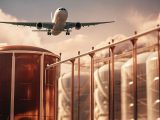
Hydrogen Drayage Trucks: TALKE USA’s Zero-Emission Game-Changer in Houston
October 16, 2025Houston, Texas – picture a place where the Port of Houston hums twenty-four-seven and giant chemical tanks line the horizon. Every day, hundreds of diesel trucks grind along a 60-mile loop from Mont Belvieu to Gulf Coast terminals, hauling everything from basic petrochemicals to raw materials. But all that’s about to change: come 2026, two cutting-edge Hydrogen Drayage Trucks will hit the same roads, equipped with a game-changing Fuel Cell Powertrain thanks to a fresh collaboration between TALKE USA, Inc. and Symbio North America Corporation. This isn’t your run-of-the-mill trial – it’s a big leap toward real-world Zero-Emission Transport.
A Game-Changing Partnership
As part of the Crafting Responsible Logistics ESG initiative, TALKE USA is teaming up with Symbio North America. TALKE, the US arm of the 75-year-old TALKE Group, knows Chemical Logistics inside and out. Symbio, backed by global bigwigs Michelin and Forvia, brings its top-tier fuel cell stacks and electric drivetrains to the table. In practice, they’ll yank out the old diesel engines and slide in high-pressure hydrogen tanks, sleek fuel cell stacks, and electric motors. The result? Trucks that can handle a full 80,000-pound payload without breaking a sweat.
Specifically, two Class-8 Freightliner Cascadia tractors are getting the greenlight retrofit. Each one will cruise up to 300 miles on a single hydrogen fill, matching the diesel rigs they replace. Thanks to a hefty THIVE windfall – the Texas Hydrogen Infrastructure, Vehicle, and Equipment (THIVE) grant TALKE USA snagged in 2024 – most of the retrofit tab is covered. On top of that, state perks from the Texas Emissions Reduction Plan sweeten the pot, making this demo project cost-competitive straight out of the gate.
Zero Emissions, Big Impact
Let’s talk real impact. A typical diesel drayage truck spits out over 1,600 grams of CO₂ per mile, plus an ugly cocktail of NOₓ and fine particulates. By swapping in hydrogen power, these two Cascadias will drop more than 1,000 tonnes of tailpipe CO₂ in their first five years – that’s like yanking over 200 cars off the road every single year. Noise takes a nosedive, too: at full tilt, these electric drivetrains run up to 10 decibels quieter, giving neighborhoods around the industrial belt a much-needed break from constant diesel roar.
And don’t worry about downtime: a hydrogen fill-up takes roughly 15 minutes, on par with diesel, so fleets can keep rolling without missing a beat. That seamless switch-in means Zero-Emission Transport doesn’t have to mean slower lanes or lost revenue.
Houston: America’s Hydrogen Hub
In 2023, the U.S. Department of Energy slapped the Houston Hydrogen Hub label on Greater Houston, recognizing its massive pipelines, refinery muscle, and petrochemical pedigree. With over 2.3 million residents and one of the planet’s busiest ports, the region is tailor-made for hydrogen breakthroughs. Plus, Mont Belvieu itself houses North America’s biggest chemical storage complex, guaranteeing a steady flow of short-haul work for these new Hydrogen Drayage Trucks.
Local players – from port authorities to terminal operators and state agencies – are already rolling up their sleeves. By 2026, four new fast-fill hydrogen stations are slated to open, stitching together a network that’ll support expanding fleets of fuel cell vehicles without making drivers detour off-route.
Scaling a Sustainable Future
This isn’t just a proof-of-concept; it’s a blueprint for decarbonizing heavy-duty freight. If these rigs deliver reliable service in one of the toughest logistics playgrounds on the planet, you can bet chemical, container, and industrial fleets everywhere will take note. Sure, there are hurdles – from hydrogen production costs to weight and range regs, not to mention supply chain kinks – but every lesson learned here brings hydrogen prices down and smooths out the operational kinks.
TALKE USA is already scouting green hydrogen options, eyeing electrolyzers powered by renewables to slash lifecycle emissions even further. Conversations are underway with Gulf Coast developers to feed low-carbon hydrogen straight into yard depots.
On top of that, TALKE USA is exploring onsite solar and wind microgrids at key terminals. Early estimates suggest they could churn out up to 500 kilograms of green hydrogen per day – enough juice for both Cascadias running two shifts back-to-back.
A Glimpse into the Future
Globally, the logistics sector is responsible for close to 10% of transport-related GHGs, and the race to net-zero freight by 2050 is on. Projects like this put the U.S. squarely on the map, showing how public-private mashups can move the needle. The International Energy Agency even projects hydrogen could meet up to 12% of global energy demand by mid-century, with heavy transport as the linchpin.
When those retrofitted Cascadias roll out in early 2026, all eyes will be on Houston’s roads and docks. Hit the mark here, and ports from Los Angeles-Long Beach to Savannah and New York-New Jersey will take notice, paving the way for broader fleet conversions. For TALKE USA and Symbio North America, these trucks aren’t just a tech showcase – they’re a concrete step toward a cleaner, quieter era in Chemical Logistics.
“We’re leading the charge toward zero-emission industrial transport,” says TALKE USA’s CEO. “This project is a game-changer not just for our fleet, but for the communities we serve and the planet as a whole.” With hydrogen refueling infrastructure spreading and tech costs on a downward trend, Houston’s new fleet offers a genuine preview of a future where heavy-duty logistics leave nothing but water vapor in their wake.



 With over 15 years of reporting hydrogen news, we are your premier source for the latest updates and insights in hydrogen and renewable energy.
With over 15 years of reporting hydrogen news, we are your premier source for the latest updates and insights in hydrogen and renewable energy.